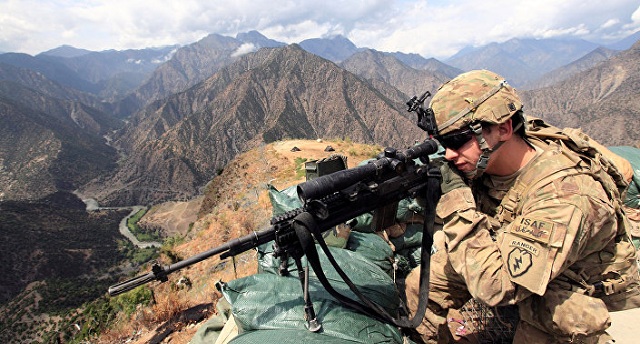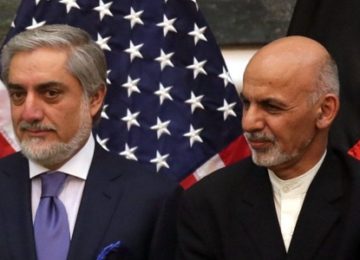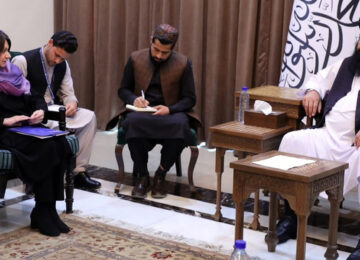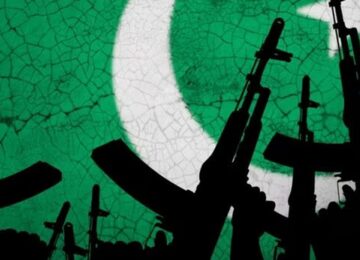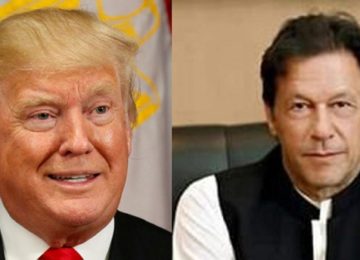Recent developments in the Af-Pak region suggest that the US is apparently working on an anti-Pakistan script to deepen its tentacles in the Afghan war further. The script portrays India and Afghanistan as victims of terrorism emanating from Pakistan.
Other than putting it as a game of bad intentions, how else can one explain the US covert design of keeping the region tense by helping widen tensions between Islamabad, Kabul and New Delhi? The answer lies in Pakistan’s fortune of getting China on board in form of the China Pakistan Economic Corridor (CPEC) and the project making Pakistan less dependent on the US.
In the new parlance, Pakistan-US relationship is defined by terrorism. If we can dislodge terrorists, we are in the good books of the US. If we fail to dismantle their nexus—whatever that means, we fall from the grace of being even an ally.
However, since the arrival of Trump, Pakistan is addressed in a slightly different tone. It is neither a warning nor a threat. It is straight away a consequence that Pakistan would face in the event of assisting the Afghan Taliban. Pakistan insists that it has cleared its tribal belt (of FATA) from any sort of terror presence. The US insists that Pakistan has not done away with all kinds of terrorists and that the Haqqani network’s footprints can still be found in FATA.
Mr Tillerson’s visit to Afghanistan, Pakistan, and India last month underscores the importance of all the three countries in bringing back the long-awaited peace in Afghanistan. However, the message that Tillerson gave to each one of these protagonists has been different.
He lent an assurance to India and Afghanistan that the US is around, with its technological and military might, to protect them, from the so-called terrorism emanating from Pakistan. In the meanwhile, the insurgents in Afghanistan also sent a strong message to the US and agents of peace with a spate of attacks. In the week that followed Tillerson’s visit to Afghanistan, from October 16 to 21, high profile attacks rocked different cities of Afghanistan.
The string of six terrorist attacks across the country left over 220 people dead including security forces and civilians. These attacks were mainly aimed at police forces and security installations. Taliban and ISIS, the main perpetrators of the attacks, called it retaliation for the intense airstrikes, along with the Afghanistan-Pakistan border, that the US conducted before Tillerson’s visit.
In real sense, these strikes either should have instilled fear in the terrorists or at least had reduced their ability to wreak havoc in Afghanistan. None of this happened. None of this has happened in the last 15 years since the US put its boots in Afghanistan to combat Al-Qaeda and the Taliban.
According to the Special Inspector General for Afghanistan Reconstruction (SIGAR) report, as of 2017, congressional appropriation for the Afghan Security sector totalled more than $70 billion—more than 60 per cent of all reconstruction funding. Still, the Afghan National Defence and Security Forces can easily be targeted by militant groups in the country.
To turn this situation around, the CIA has been given a new role in Afghanistan. Earlier the spy agency had the mandate to train the Afghan militia and intelligence services to defeat Al-Qaeda. This was also coupled with the clandestine drone operations that the agency was carrying in both Afghanistan and Pakistan’s FATA region.
Now the CIA will hunt down the Taliban using small military units. These counterterrorism pursuit teams would consist of highly experienced officers, contractors, and the Afghan troops. According to the CIA’s new Director Pompeo, the CIA can’t perform its mission if it is not aggressive.
The agency is also poised to broaden its covert drone strikes in Afghanistan. The question is, with such a blunt and ruthless approach, will the CIA’s covert operation also cross over Pakistan, especially its drone programme?
Drone strikes have a long history in Pakistan. Though the CIA started drone strikes in Pakistan under President George Bush, it was during President Obama’s tenure that the rate of drone strikes rose by 631 per cent. From January 20, 2001, to January 20, 2017, 2514 people were killed of which 969 were civilians and 207 children. The numbers of injured were around 1,749.
What option does Pakistan have to handle the US, especially amid the huge cloud of self-invented trust deficit?
Pakistan’s survival lies in joining ranks with China and Russia. China dominates this triangle because of its massive investment in the country. But the regional scenario demands that Pakistan must stop acting in the shadows of power-to-be and become self-reliant economically.
The benefits of the CPEC should not benefit China alone, it must also nourish Pakistan’s business interests. Another forum that needs to be explored is the Shanghai Corporation Organization developed initially to thwart terrorism in the region.
Pakistan should enlarge its role in SCO, especially after its membership in the bloc. Pakistan’s anti-terrorism diplomacy must also take off with full force, with an objective to redefine Pakistan’s image of a nation that discourages terrorism and can stand without crutches. Pakistan needs to change its fate and aim for self-reliance with help of its new allies. It’s a long call. But every journey starts with a first step.
The author Durdana Najam is a journalist and can be reached at durdananajam1@gmail.com.
© Center for Research and Security Studies (CRSS) and Afghan Studies Center (ASC), Islamabad.



